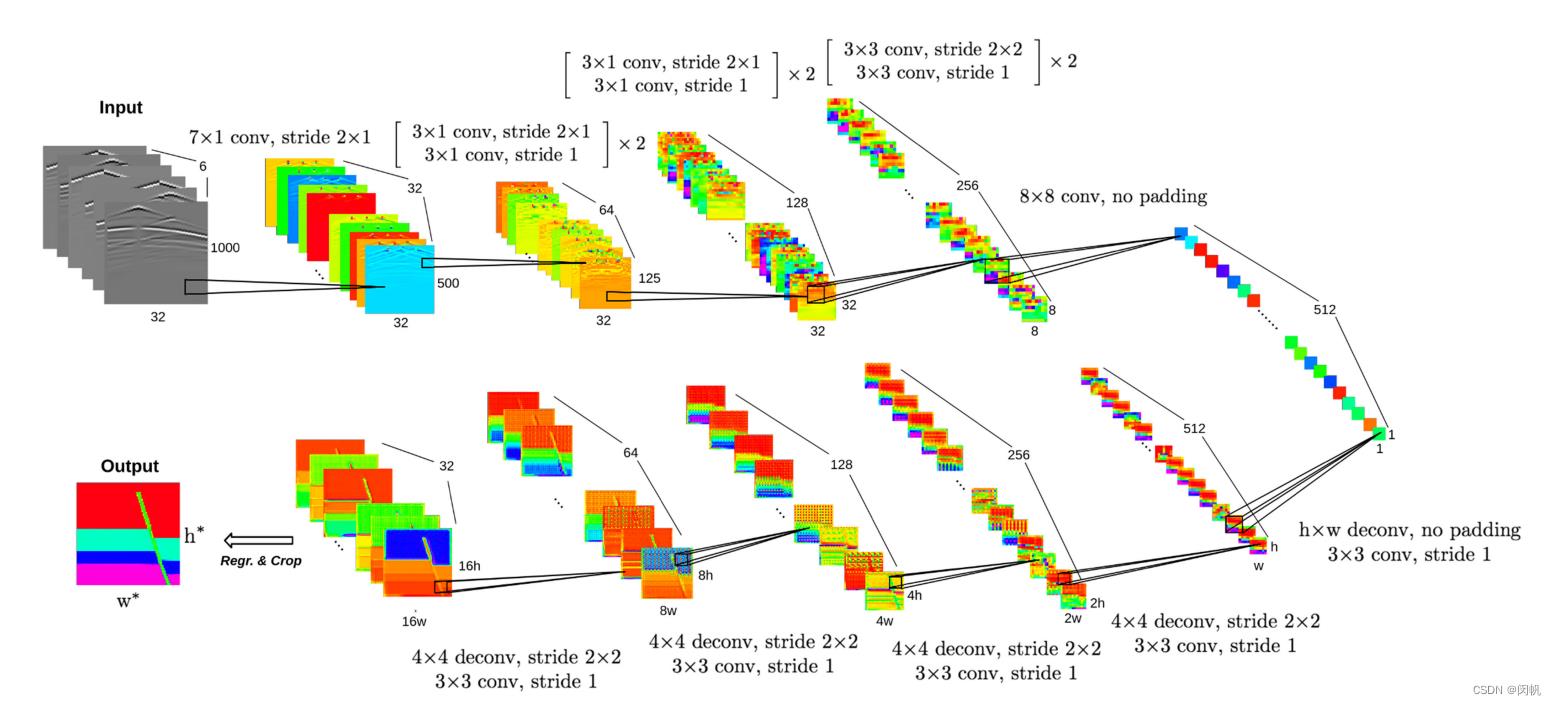端到端的方法
Posted 闵帆
tags:
篇首语:本文由小常识网(cha138.com)小编为大家整理,主要介绍了端到端的方法相关的知识,希望对你有一定的参考价值。
摘要: 纯粹的端到端方法, 是指根据预先给定的训练数据, 即 地震记录-速度模型 对, 训练一个深度网络. 这本质上是一个离线 (offline) 的方式. 训练获得的模型, 可以很快进行预测.
1. 基本思想
可以把反演看作是图片的“风格迁移”, 类似于将猫的照片转换为卡通样式的猫. 地震数据就是原始图像, 而速度模型就是卡通图像.
- 优点: 与图像处理方式类似.
- 缺点: 需要非常多的数据. 可解释性较弱.
2. 基本结构
图 2 给出了一个典型的编码-解码器结构, 从多炮数据获得了速度模型.

参考文献
[1] W. Wang, F. Yang, J. Ma, Velocity model building with a modified fully convolutional network, in: SEG International Exposition and Annual Meeting, 2018, pp. 2086–2090.
[2] Y. Wu, Y. Lin, InversionNet: An efficient and accurate data-driven full waveform inversion, IEEE Transactions on Computational Imaging 6 (2020) 419–433.
[3] S. Feng, Y. Lin, B. Wohlberg, Multiscale data-driven seismic full-waveform inversion with field data study, IEEE Transactions on Geoscience and Remote Sensing 60 (2022) 1–15.
[4] M. Araya-Polo, J. Jennings, A. Adler, T. Dahlke, Deep-learning tomography, The Leading Edge 37 (1) (2018) 58–66.
[5] S. Li, B. Liu, Y. Ren, Y. Chen, S. Yang, Y. Wang, P. Jiang, Deep-learning inversion of seismic data, IEEE Transactions on Geoscience and Remote Sensing 58 (3) (2020) 2135–2149.
以上是关于端到端的方法的主要内容,如果未能解决你的问题,请参考以下文章